Neighborhood Nukes in South Jersey
In the rural Southern New Jersey community of Woolwich Township are the remains of another cold war relic, Nike Missile Battery PH-58. Unlike the Lumberton site, PH-23/25 from my previous post, when this site was decommissioned in 1974, it remained abandoned and was never repurposed. Now it stands as a dilapidated, overgrown memory of a time when our military needed to defend our major cities against an attack with nuclear warheads mounted on surface to air guided missiles.
I was pleasantly surprised when the Woolwich Township Committee agreed that this site needed to be preserved photographically and gave me permission to do so. My guide was one of the town’s Committeeman named Jordan Schlump. I owe him a lot of gratitude because he happily agreed to work a photographer’s schedule, starting before sunrise on several cold mornings.
Nike missile batteries were divided into two sections. One was the Integrated Fire Control (IFC) or radar section for tracking enemy aircraft and guiding the missiles. The other was the Launcher Area where the Nike missiles were stored, maintained and would have been launched if necessary. These two sections of a Nike battery were about a mile or more apart. There were technical reasons for this, but one result was that the personnel stationed at the IFC and the Launcher Area lived separately and sometimes developed a rivalry with each other. Why not? The radar guys must have been the geeks working on computers and radar scopes while the launcher crews were the mechanics who got their hands dirty keeping the Nikes in prime flying condition.
Another difference between this Nike missile site and the one in Lumberton is that the rural farm land around it is not much different than it would have been in the 1950’s and 60’s. As I walked around PH-58, I could imagine what it was like to be stationed here. These soldiers were carrying out an important, but probably monotonous duty watching the skies for Russian bombers that, thankfully, never came. Being stationed in a rural South Jersey must have also left little for these young men to do when off duty.
Integrated Fire Control (IFC) Radar Section
The layout of this section included four radar towers and control and generator buildings. Although the site was pretty well cleaned out, there were still quite a few leftover elements of its active duty days. The site is very overgrown making exterior photographs of the buildings and towers difficult, if not impossible.
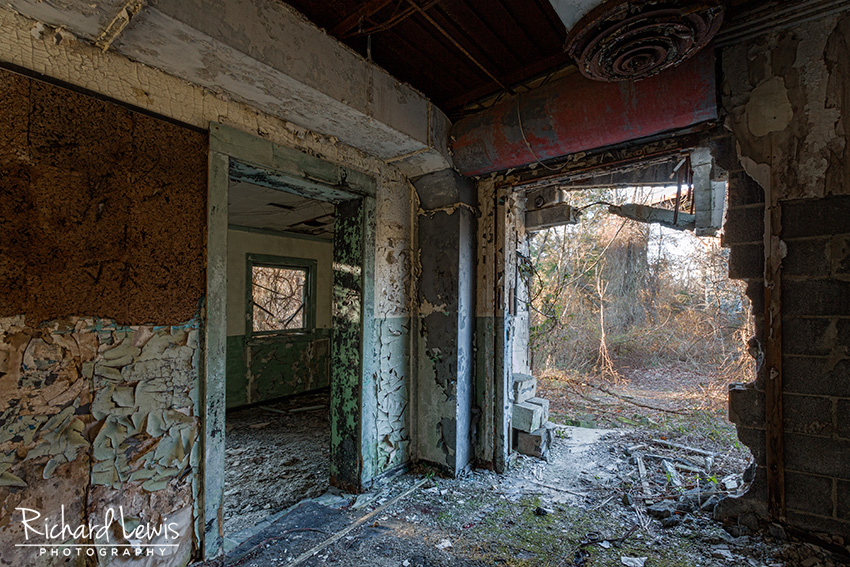
PH-58 IFC Control Building by Richard Lewis 2016
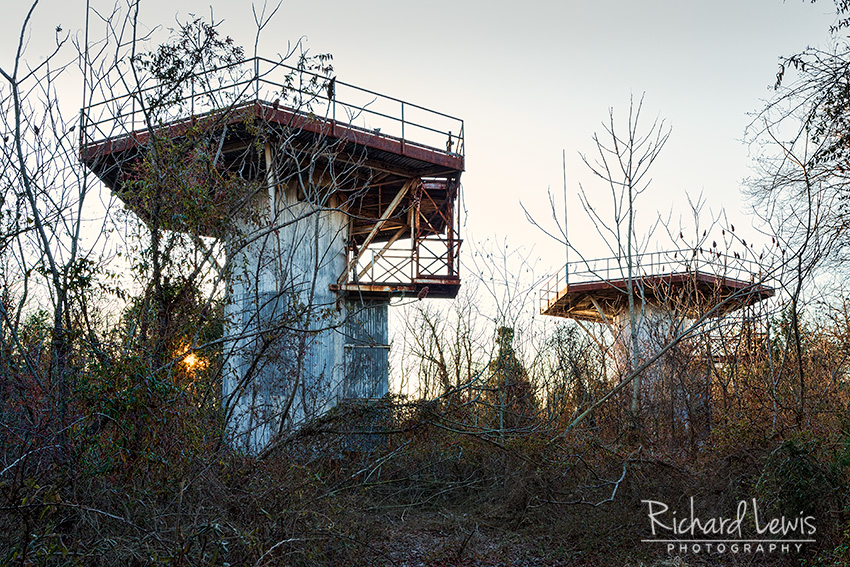
PH-58 Radar Towers by Richard Lewis 2016
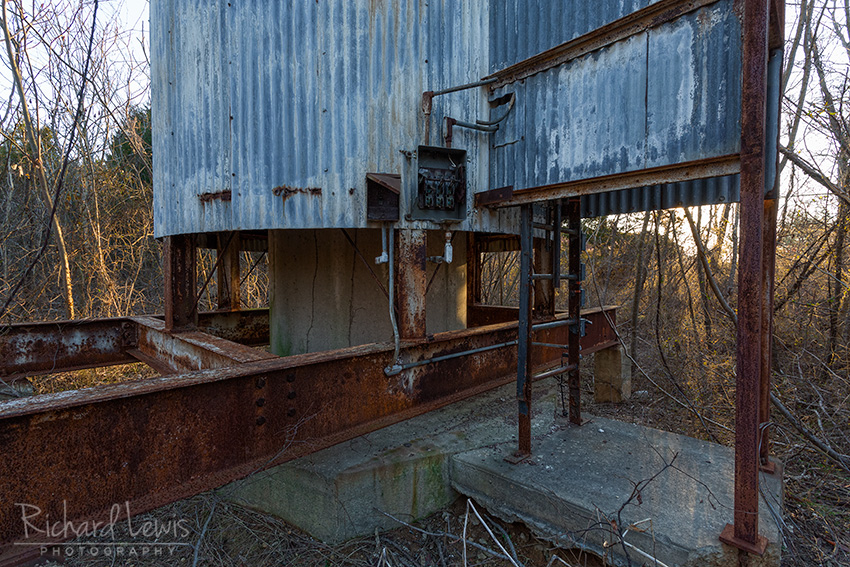
PH-58 Radar Tower Base by Richard Lewis 2016
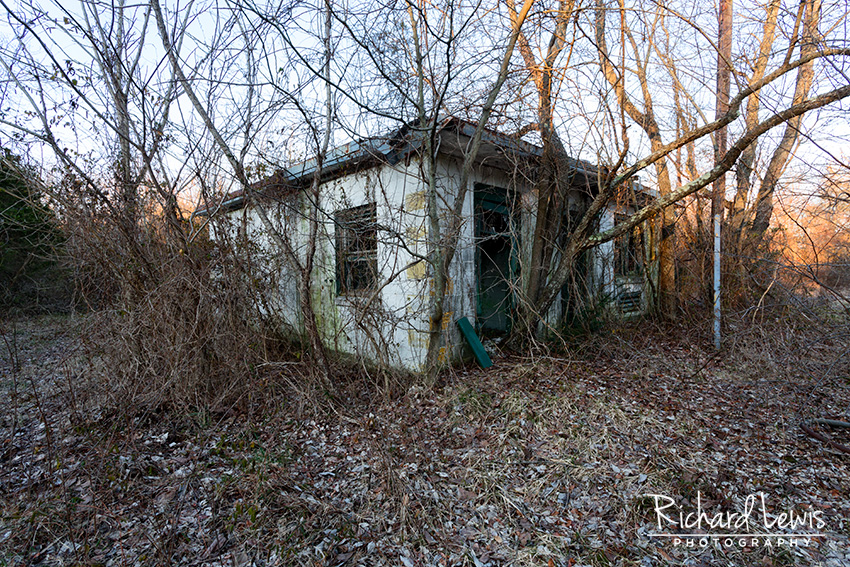
PH-58 Generator Building by Richard Lewis 2016
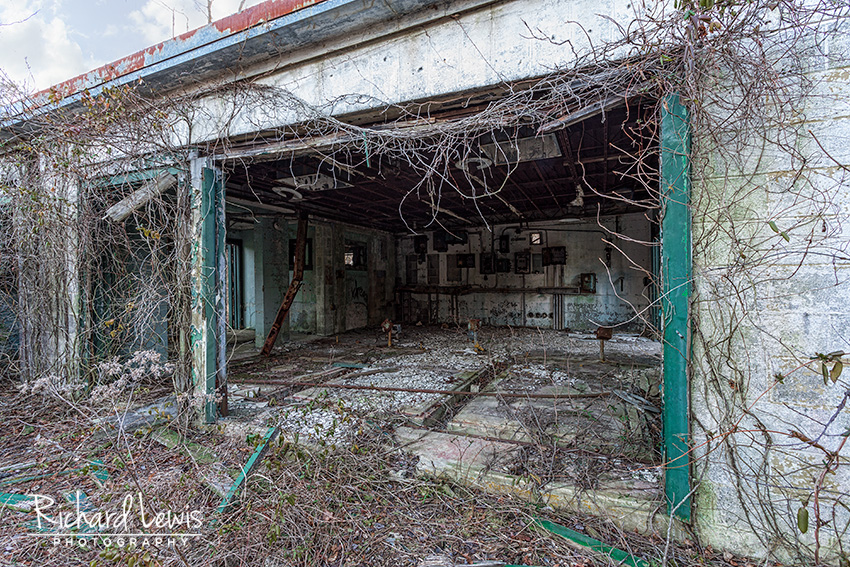
PH-58 Generator Building Interior by Richard Lewis 2016
Barracks and Administrative Buildings
Right next to the IFC is the barracks and administrative area which has three simple, one story buildings that contained the headquarters, mess hall, living quarters and other services for the soldiers stationed there. Again, overgrowth around the buildings made it impossible to photograph the exteriors.

PH-58 Arms Locker by Richard Lewis 2016
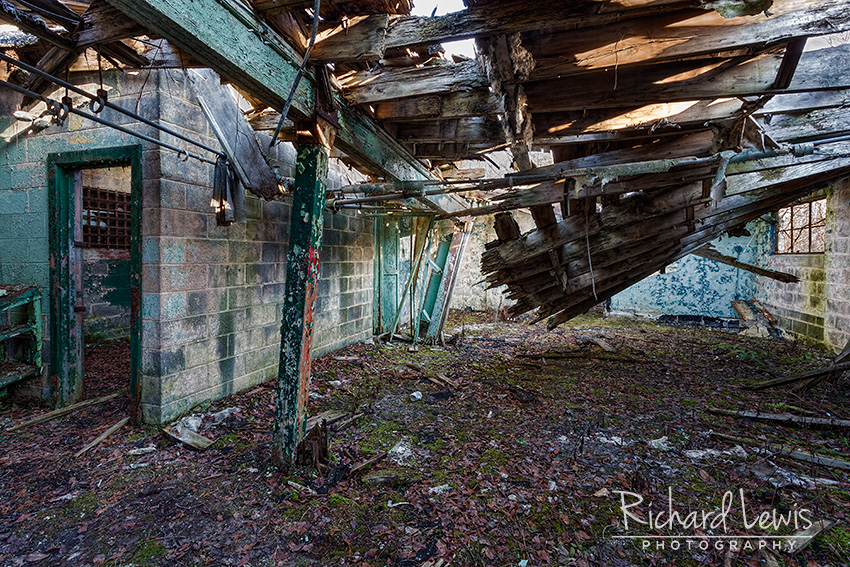
PH-58 Administrative Building by Richard Lewis 2016
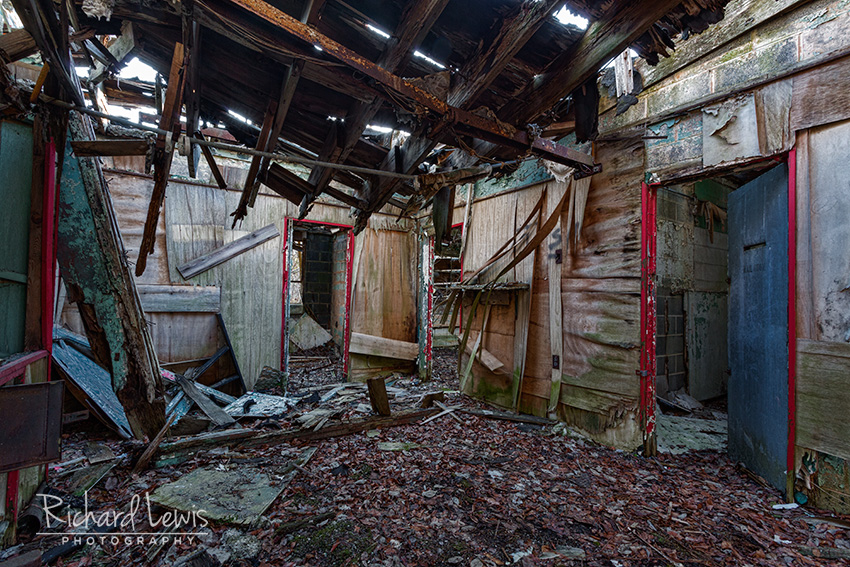
PH-58 Headquarters Lobby by Richard Lewis 2016
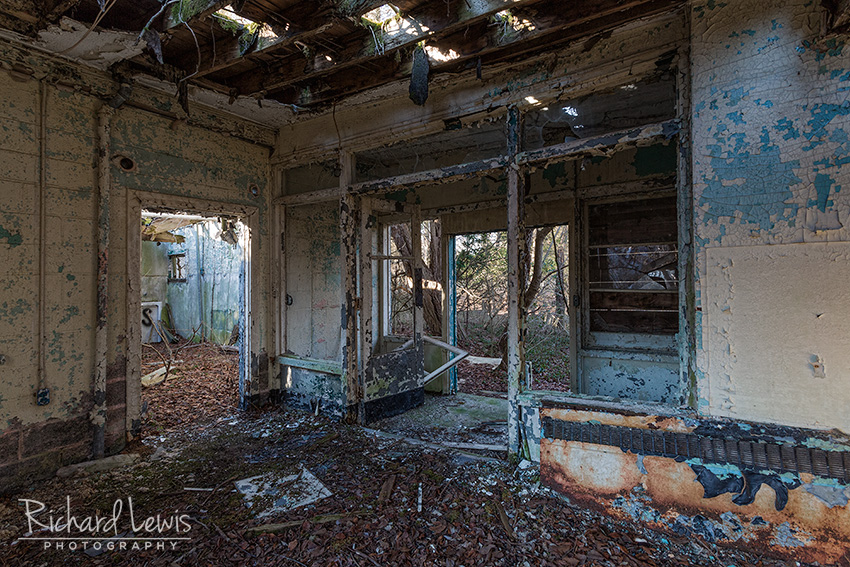
Ph-58 Barracks by Richard Lewis 2016
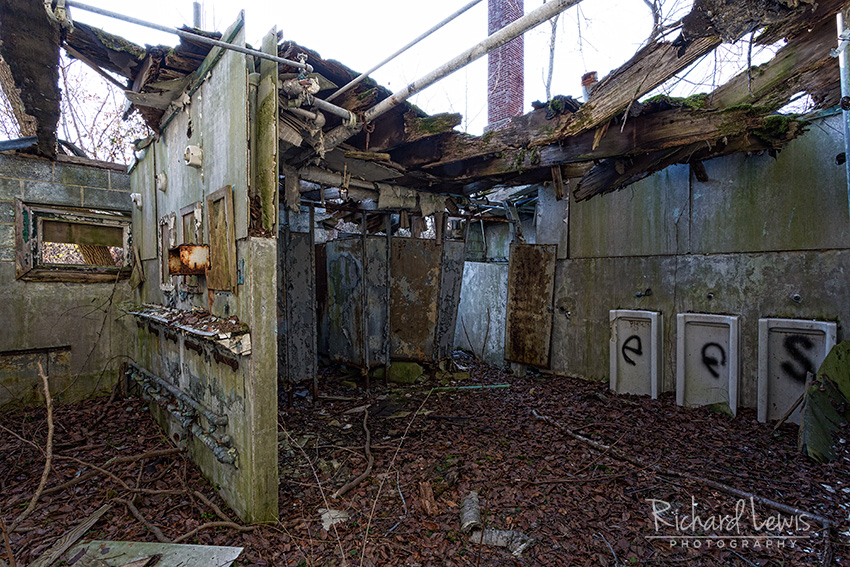
PH-58 Barracks Latrine by Richard Lewis 2016
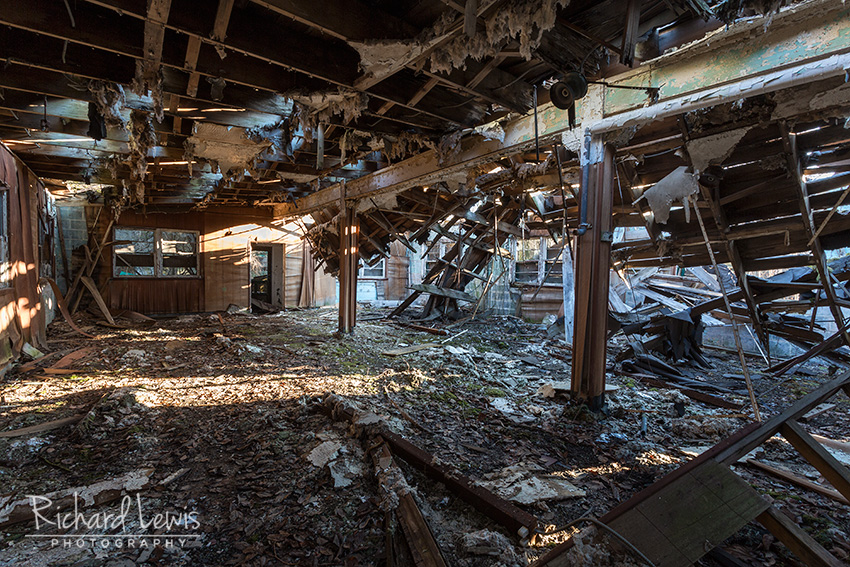
PH-58 Mess Hall by Richard Lewis 2016
The Launcher Section – Magazines
The Nike missiles were stored underground in large missile magazines. They would have been brought up to the surface for launching on large elevators. Security around the magazines was tight. In addition to armed soldiers, guard dogs roamed the area at night.
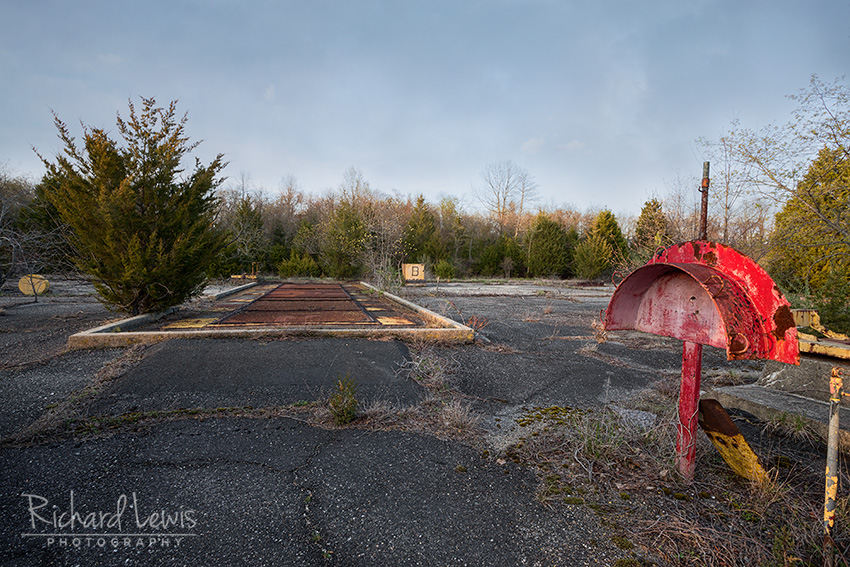
PH58 Missile Magazine Elevator by Richard Lewis 2016
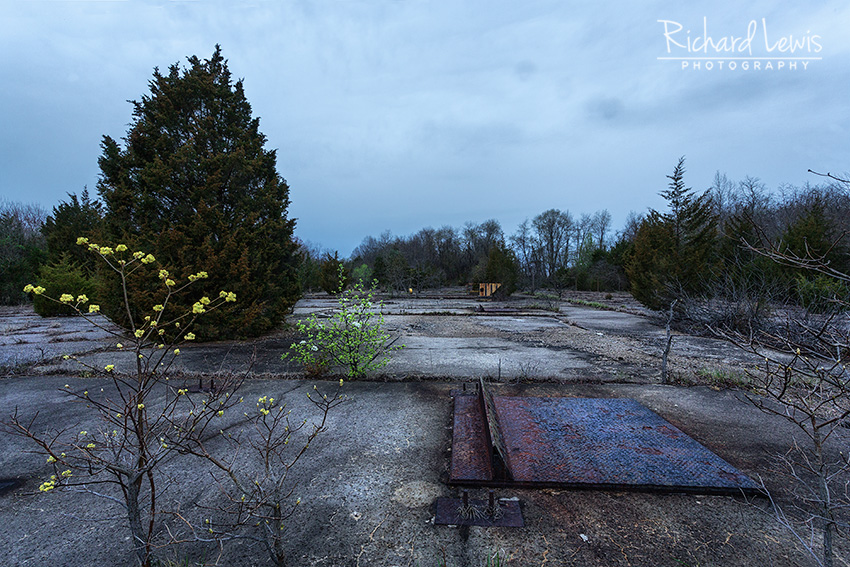
PH58 Nike Missile Blast Plate by Richard Lewis 2016
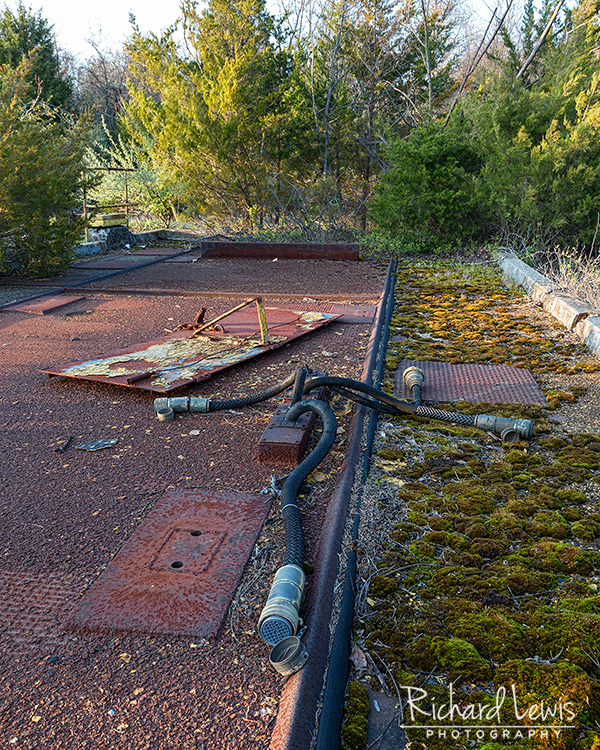
PH-58 Nike Missile Electrical Connections by Richard Lewis 2016
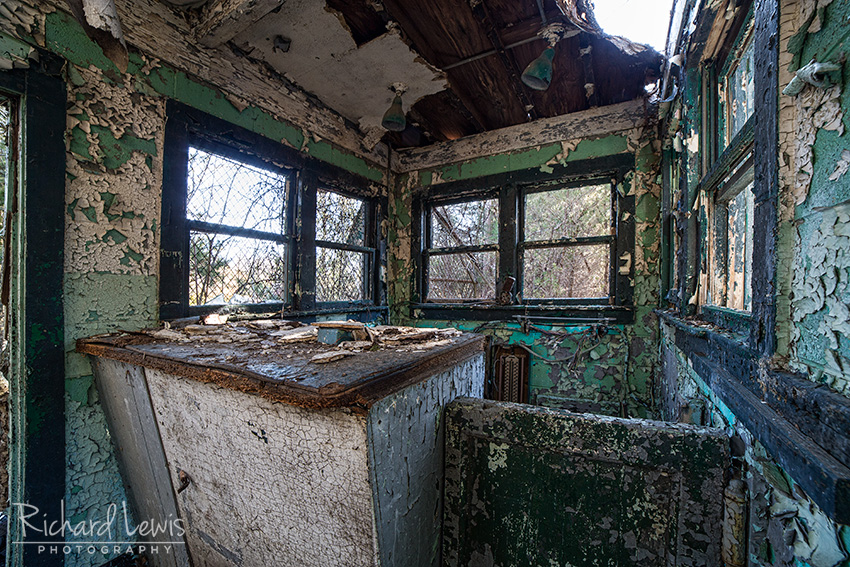
PH-58 Missile Magazine Guard House by Richard Lewis 2016
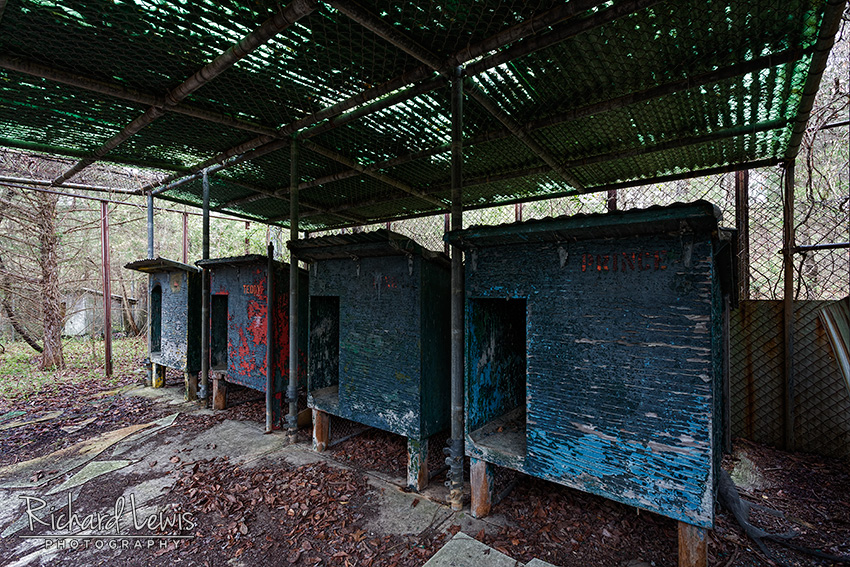
PH-58 Guard Dog Kennel by Richard Lewis 2016
The Launcher Section – Missile Assembly Building
This building would have been where the Nikes were assembled and maintained. They would then be moved to the Warhead building to be armed.
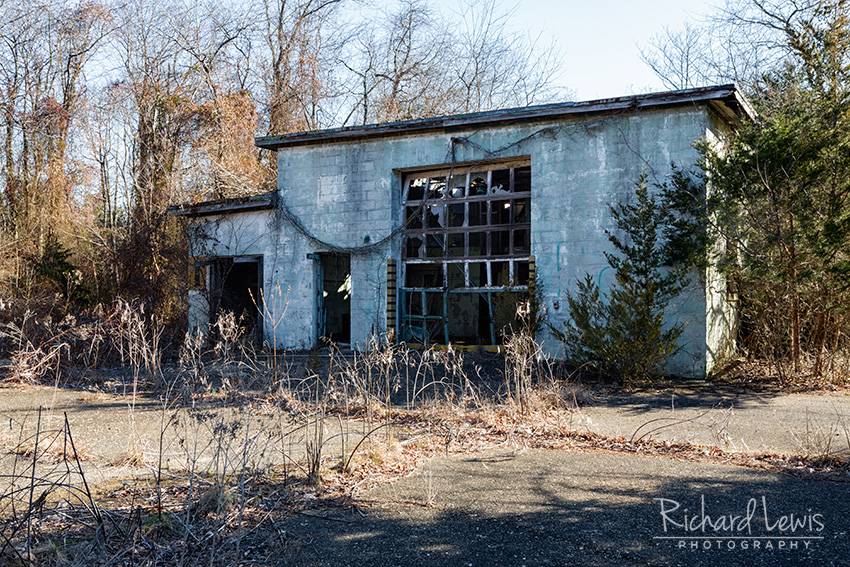
PH-58 Nike Missile Assembly Building Exterior by Richard Lewis 2016
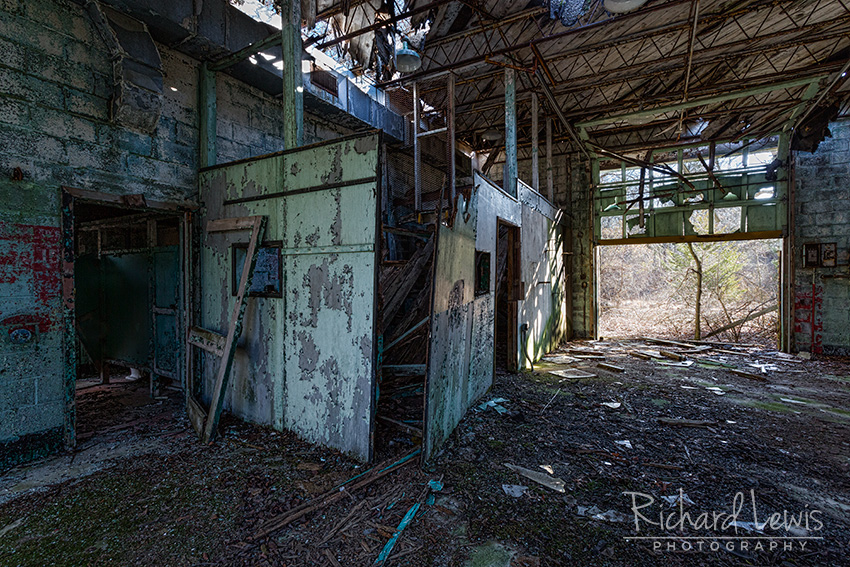
Nike Missile Battery PH-58 Missile Assembly Building by Richard Lewis 2016
The Launcher Section – The Warhead Building
This simple building would be used to arm the missiles. It was surrounded by a high dirt berm in order to help contain an accidental explosion. While that berm would have worked in the early days of the Nike missile program, one wonders how much help that berm would have been once the Nikes went nuclear.
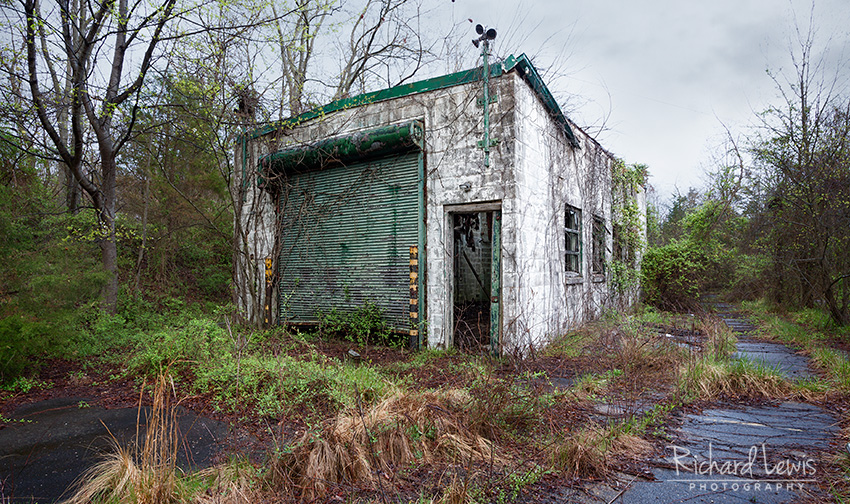
PH-58 Warhead Building by Richard Lewis 2016
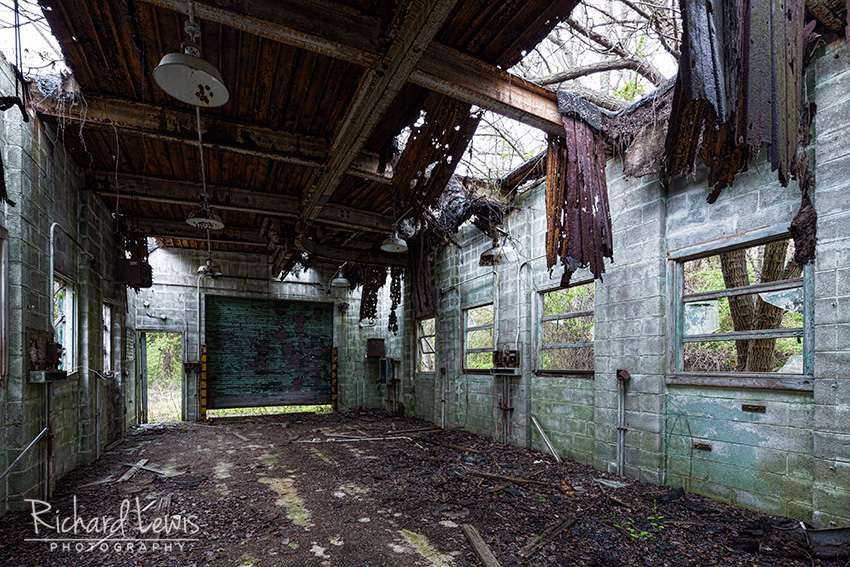
PH-58 Warhead Building Interior by Richard Lewis 2016
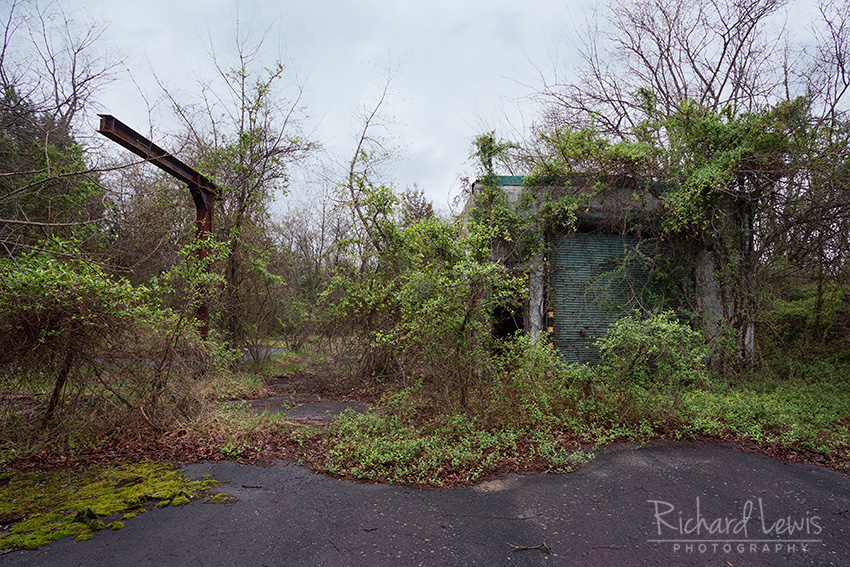
PH-58 Overgrown Missile Warhead Building by Richard Lewis 2016
The Launcher Section – Other Buildings
There were other buildings in the launcher section including a Ready Building with rooms for meetings, arms storage and one of the few restrooms. There was also a barracks, generator building, chemical storage building and a water filtration plant.
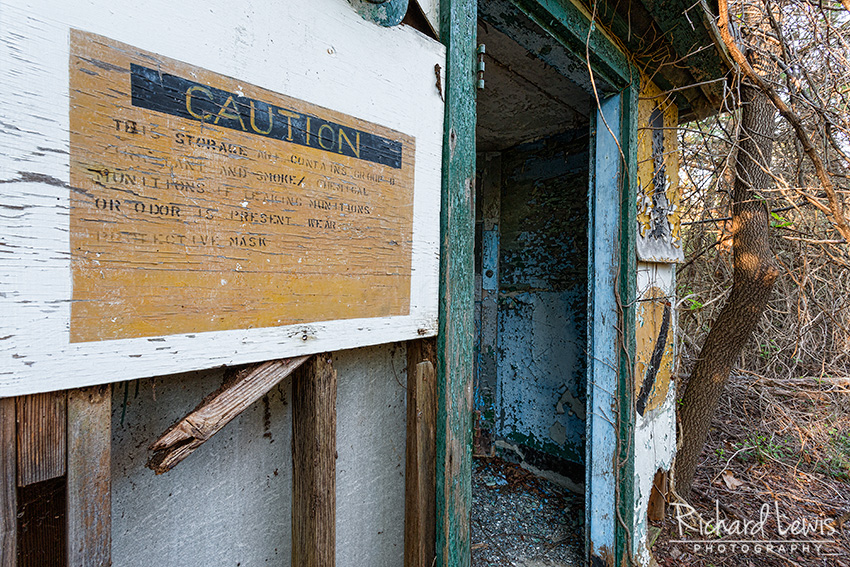
PH-58 Ready Building Caution Signs by Richard Lewis 2016
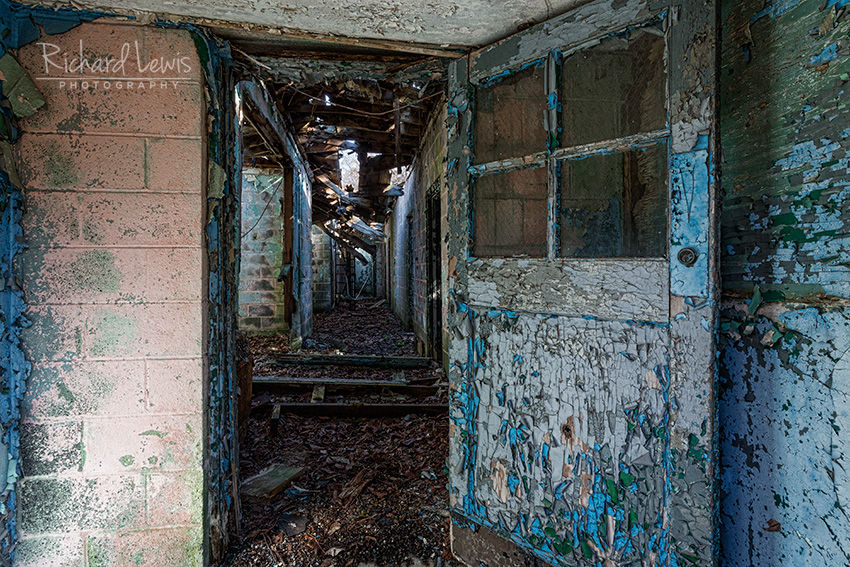
PH-58 Launcher Ready Building by Richard Lewis 2016
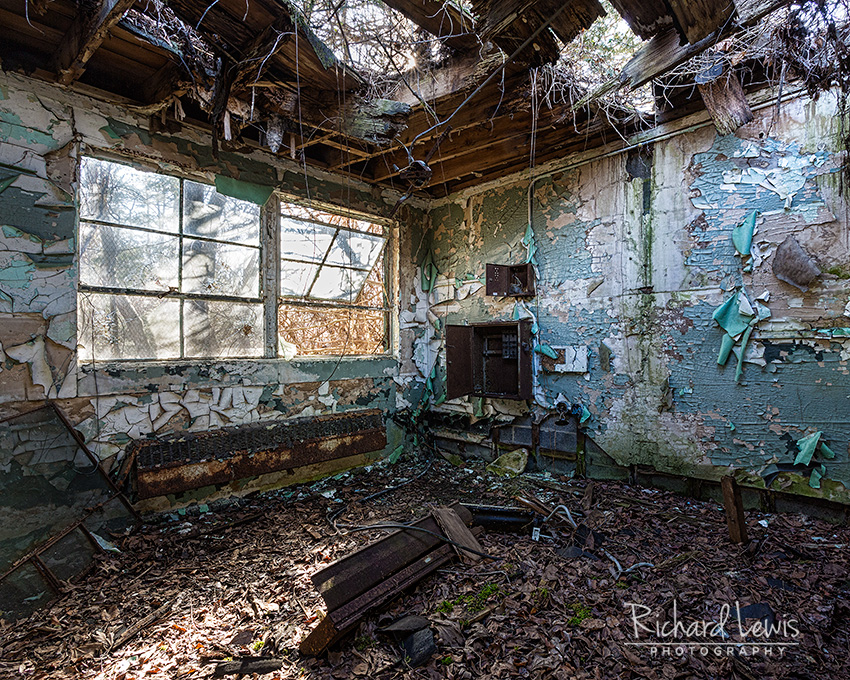
PH-58 Launcher Area Ready Building Interior by Richard Lewis 2016
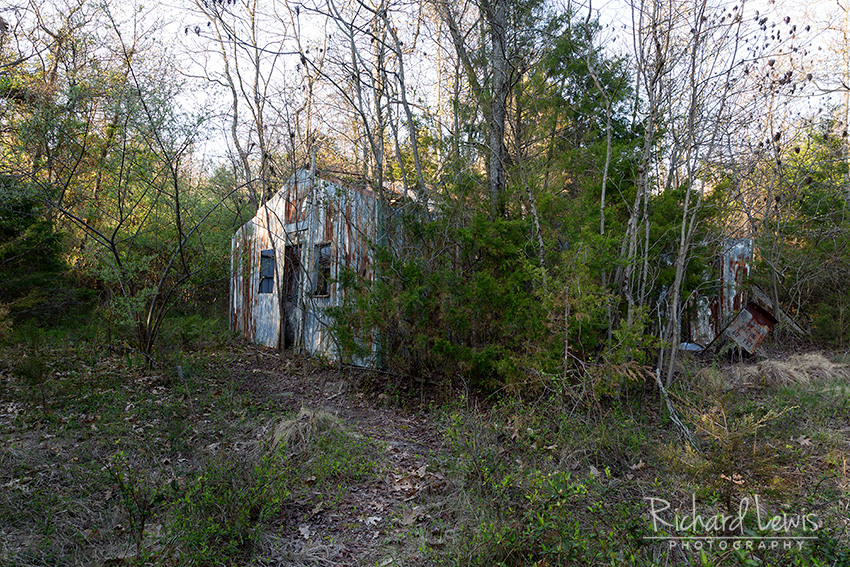
PH-58 Fuel Storage Building by Richard Lewis 2016
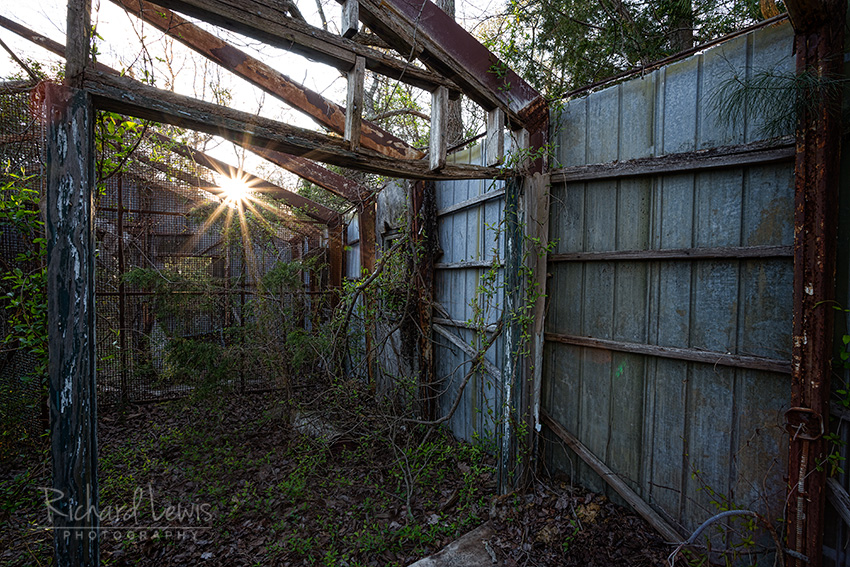
PH-58 Fuel Storage Building at Sunset by Richard Lewis 2016
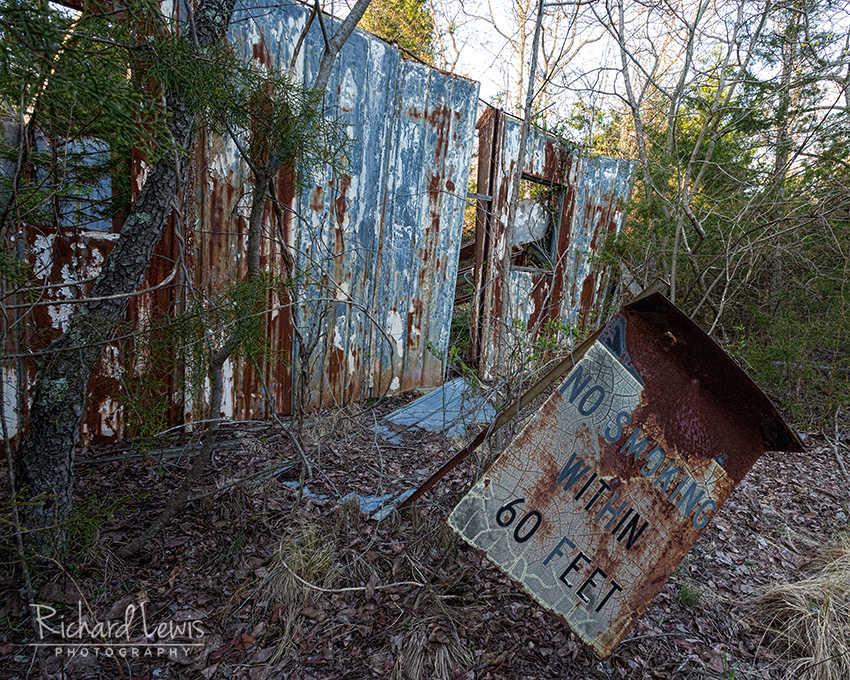
PH-58 No Smoking by Richard Lewis 2016
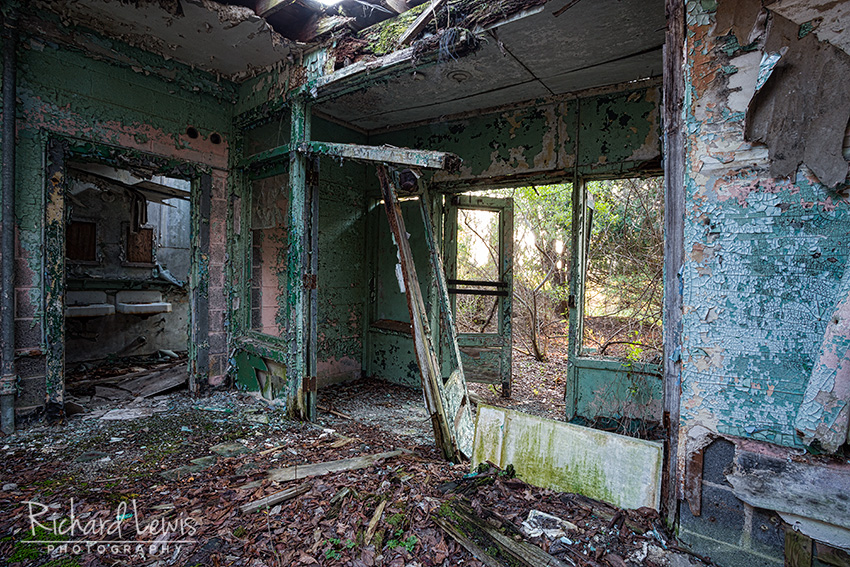
PH-58 Launcher Area Barracks by Richard Lewis 2016
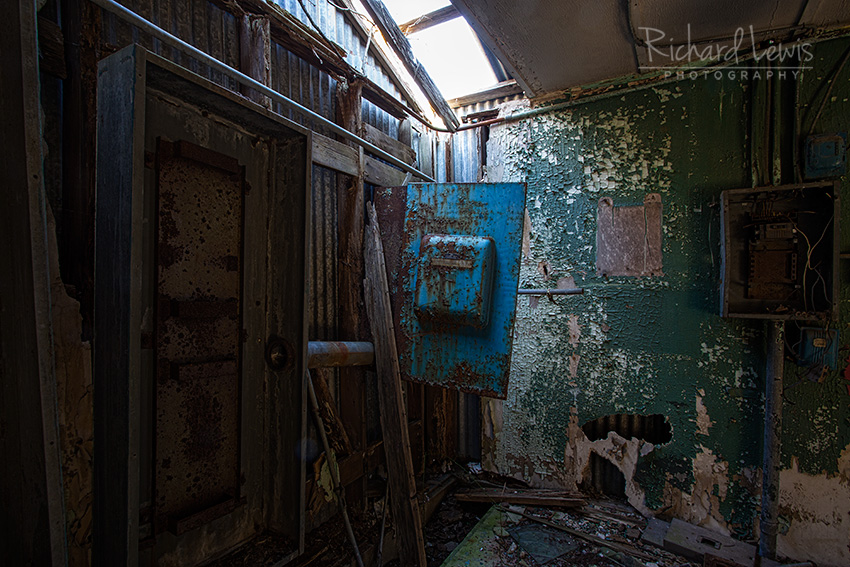
PH-58 Launcher Area Generator Building by Richard Lewis 2016
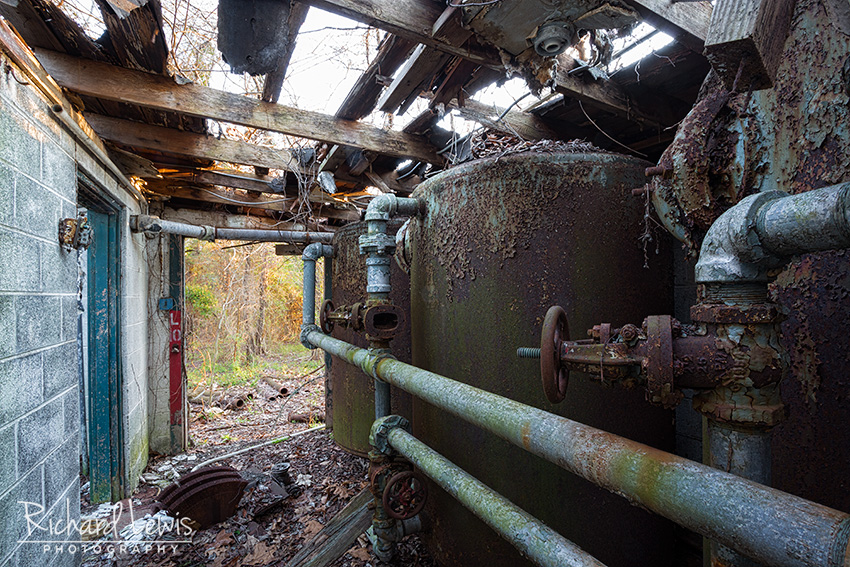
PH-58 Water Filtration Plant by Richard Lewis 2016
Honoring Our Cold War Veterans
The soldiers of the cold war were tasked to defend our nation against the threat of a nuclear holocaust that was unprecedented in world history. The Nike missilemen at PH-58 and other missile batteries were the last line of defense. Using sophisticated radar and nuclear guided missiles they guarded our cities and industrial centers from Russian bombers carrying atomic bombs. The fact that our military was willing to detonate a nuclear device over US soil shows how desperate we were during the cold war to defend our country. If these soldiers were called to actually practice their craft, the world would have been in the gravest of situations.
Enjoy
Click Here for more photographs of this and other Nike missile sites

Thanks for the images and words. Both provide a fascinating insight into the history of that period and a sense of how quickly something so present becomes past. It seems your photographs will be the act of preservation as the site looks too far gone to be saved even in its current state.
Thanks, as always, for your comments Laura. This site is definitely too far gone to be preserved. It is the only intact Nike missile site in the Philadelphia area, but from what I hear, it is slated for redevelopment. I’m glad I was able to photograph it to help preserve this important, and scary time in history.
It really is hard to believe that this facility at one time was there to defend and deliver nuclear warheads. I really do not consider 1974 when this facility was decommissioned that long ago- just a little over 40 years. It is just amazing how it has become so dilapidated. Another interesting post Rick. Thank you.
Thanks Larry. It’s not just the fact that this facility closed 40 some years ago that intrigues me, it’s that there were nuclear missiles housed there, ready to fire at a moments notice.
Great tour of this Nike site…the proximity to cities and housing for these places still amazes me.
Thanks for the compliment, Robert. The one thing that is still find amazing and is that these sites with nuclear warheads were located right next door in the towns surrounding the cities and industrial centers they were defending.
We had them here in CT
They were defending Bridgeport and Hartford. I believe they are all gone now. The land in those areas is valuable real estate so it wouldn’t remain vacant.
I went to one in Middletown, CT – the FCC has been converted into a Fire and Rescue training center for the town.
This site is one of the only ones I’ve seen that was closed and never repurposed or demolished although that will change soon as it is slated for demolition. In a previous post I posted photos of PH23/25 in Lumberton New Jersey. The barracks and administrative buildings were used as a private school for leaning disabled children before it was abandoned and demolished. Parts of the launcher area are still around and used for storage by the Public Works Department. Did you photograph the site in Middletown?
Yes I did…nothing as interesting as what you found though…
Here: https://infraredrobert.wordpress.com/2013/08/10/feel-safe-2013/
I was stationed at PH-58 Swedesboro, NJ 1962 – 1964….Then transferred to Headquarters, Pedricktown, NJ….
Thanks for your comments John. I’m not sure if we have met but your name sounds familiar. I’d love to talk to you sometime about your experiences in Swedesboro and Pedricktown.
I was the Assembly Sergent at PH-58 in 1963-1964.My office was in the Assembly Bldg.I helped remove warheads and put in retested warhead from a tested lab(don’t know where they were tested)in Warhead Bldg.It’s hard to believe all the trees and shrubs that have grown there.
Bittersweet memories of my own time in Florida. There I was an electronics specialist for nuclear warhead support. It’s only in recent times that the true gravity of the situation has come back to haunt me, badly. I thank God that we never heard the “Blazing Skies” alert call and tell myself that what we did was in service to our country. Small comfort when you speculate on what would could have been. To this day I shy away from viewing images of nuclear clouds.
Dennis thank you so much for your thoughts here and for your service to our country. I can only imagine what it would have been like for you had the alert been called. You Nike Missile Men were our last line of defense and the idea that you would have detonated a nuclear device so close to our shores must be a tough thing to live with. However, As you said, thank God it did not happen. I do hope you take comfort in the fact that the alternative to not having these Nike missiles would have been worse than having to use them to defend our shores.
Richard, these photo’s bring back some memories as I was stationed there from 6/72 – 7/74 and left just before it was dismantled. Some of the pics I don’t recognise but others I can. I was an mp so I recognized the guard shack. It was just a square bulding with a counter in the front were the dog handlers let the dogs rest. It’s sad to see the site in such poor condition, you’d think the gov’t would have turned it into a park for memories.
My best friend on base was Steve Ganitch (also an mp), I was his best man and he introduced me to my wife. I was married in 1974 while stationed in PH-58, and we’re still married for 42 years. When I was dating my wife, should we bring me dinner when I worked guard duty and pass it through the fence. We had a some good times in old Swedesboro and maybe we’ll reuturn the see the shell of its remains.
I was sent to Germany for the next few years and ets in late 1977.
I really think that they should have preserved a lot of the sites like this especially the ones with such history behind them well they all have the history but I was going to touch when I watched it explores video and they went through and pointed out the names of the dogs on the kennel there they said King Princr and Teddie I thought that was very nice to see the dogs names remembered and honored for their service and Duty
I am 78 years old now. In May 1956 my first military assignment was Site 58. It was D Battery, 176 AAA Msl Btry, Swedesboro, New Jersey. I was an Acquisition Radar Operater for two years prior to being assigned to Ft. Bliss, Texas attending a year long Technical School on repair of the radar systems and a ratty analogue computer. Your pictures and short stories brought back pleasant memories for an old man as a 17 year old Army Private.
David, thank you so much for your comment and for your service to your country, especially at such a young age. You were probably there when this site opened and it must have looked a lot different. Thanks also for sharing a little of your history at PH-58. One of the reasons I photographed these sites and blogged about them was to bring to light the importance of Nike program to our defense at the time. I’m also glad that these photographs and comments from others brought back some good memories. Thanks again for your comment.
I was a 16C (Radar Operator) stationed stationed at PH-58 (to us Battery 3-43, from June 73 until the closing (when I was lucky to get sent down to the remaining Nike sites in Miami. Glad to share some storied of those last months if readers are interested.
Larry Croll
I have a dozen scanned digital m photos of the site taken in 2000 (when I escorted a Philadelphia Inquire reporter around the grounds).. Includes diagrams of the IFC area and some nice aerial photos (from on-line service) of the IFC and launcher area.
Glad to share if you have a way for me to send them to you!
Hi Lawrence,
I would love to see the photos and hear your stories. For the photos, I can send you a link to upload them to a dropbox folder online or you may just be able to email them to me at rich@richardlewisphotography.com. For the stories, you can also email them to me or feel free to leave them in a comment here. Either way, I’ll share them on this blog and with the Nike Historical Society if you want me to. Thanks for your comments!
Hi Rich, Really enjoyed the pictures and comments of PH-58 – nice job! But the site looked a lot better when I was stationed there from 1962 to 1965:) I was assigned there right after basic training at Fort Dix, NJ. When I got to the site the CO interviewed me and assigned me to the IFC (Fire Control) area where I started to learn to become a MTR (Missile Track Radar) operator. I learned quickly and became a good crew member.
I really enjoyed it and over the years we had a number of Blazing Skies(Battle Station) drills from various command organizations. We also had interesting testing when the Air Force came onsite and we were tested on detecting and practice firing on their bombers as they did a practice bombing attack on Philadelphia. It was so great being on the firing crew several times as we launched Nike missiles at White Sands Range in New Mexico as part of our SNAP (Short Notice Annual Practice) which occurred once a year.
The radar antennas at PH-58 were on the ground when I first got there, then the towers were built and the antennas were raised on them. During the Cuban Missile Crisis, guards were doubled, we carried gas masks and weapons while on duty. I remember sleeping on the floor in the radar van at night when on the active crew.
After about 2 years I was promoted to SP5 (E-5) and moved from the regular barracks to the NCO barracks. I really enjoyed my time at B Battery, 3rd Missile Battalion, 43rd Artillery at Swedesboro, NJ.
Jim Cullen
Thanks for all the details of your service at PH-58. It nice to have this information. The goal is that this post serves to help preserve some important history. When I started photographing the Lumberton battery PH23/25 I had no idea the role these sites played in our defense. Since then vets like you who served in the Nike program have provided some great information. Thanks again for your comment and compliment on my work.
Hey Rich, great job document this South Jersey piece of history. I was wondering if Lawrence Croll decided to share the pics he had taken in 2000. I would be very interested in seeing them. If so could you direct me to a link if they were uploaded somewhere. Again thank you for documenting these important historical sites. Dave
Thanks Dave for the compliment and I agree about the importance of documenting this important piece of history. There are not many of these Nike batteries left. Lawrence did send me some photos from 2000. In fact I need to get back to him because he has been really great about identifying various places around the IFC where he served. If he is okay with me uploading his photos, I will put them somewhere that you can access them.
Rich, thanks for the wonderful memories I was stationed at the Swedesboro site from Sept.1967 to May 1970, I had several duties, Missile technician, Sgt of Guard, and Battery clerk.
Hi Gene. Thanks for your comment and sharing a little of your experience in the Swedesboro battery. Of course, thanks for your service too.
PH-47 in pitman nj is still intact and I can get you in there to take pictures of the underground silos
I would love that. Thank you.
Richard, so enjoyed these pictures but I am 70 yo and remember touring the Nike Base when I was young and it was fully functional. Parades in Swedesboro had soldiers, trailers with rockets and tanks and lots and lots of patriotic pride. The Cold War had my brother in Iceland for the same purpose. Keep on keeping the memories alive. Mary Ann (Worrell) Grasso
Thanks for your comment Mary. I appreciate it and will do everything I can to keep the memory of this piece of our Cold War history alive.
My Dad worked for NJ Bell in the 50-60’s…and had a very high security clearance. He worked at all the sites in the area. He was “on call” at all hours for problems with communications that his job covered. It seems, as I remember the Williamstown site had plenty of problems. And when President Lyndon B. Johnson met with Premier Alexei Kosygin (June 23-25, 1967) in Glassboro at Glassboro State College’s President’s Home: Holly Bush, Dad was tasked with keeping lines open for them in the basement of the house. What was suppose to be one day turned into 3 days, Secret Service came to the house to tell Mom that Dad wouldn’t be allowed to come home until they were done there… Dad said they brought him a cot to sleep on and since all the food for the two principles was cooked there…he got what they were eating too! Johnson made sure he wined & dined Kosygin with lobster, beef, etc…so Dad and the Secret Service who stayed with him ate well! Dad said the agent, who was assigned to him, told him that Johnson made sure that Kosygin’s motorcade came through NJ’s “industrial North…and up Rt 322 which was lined with farms and orchards at the time (not the housing developments we see today) so the Soviet Premier could see the prosperity and diversity of the US…
My husband went to High School at Kingsway (Class of ’69). And he said there was plenty of times, while gazing out the windows, he would see the missiles come up at the Base there beyond the football field. He wondered if they would need to “get under their desks”….
Hi Christine,
Thanks for sharing your story here. This is definitely an interesting slice of cold war history.
While Woolwich Township is looking to redevelop the site, it is looking for a commercial venue that as part of a private-public partnership, would be preserve the four radar towers for interpretive uses. One idea of interest could be a Cold-War-themed brewery that would create a destination with bathroom and positive ratable.
When I photographed there I was escorted by a township official and he was talking about this particular redevelopment project. That was a few years ago and hopefully it can move forward in a way that can preserve the towers. They are quite interesting pieces of of history.
Rich, what a treasure trove of pictures and commentary. Thank-you for documenting this for our community. I do hope your book is still on target for a 2019 release. Would you ever be interested in speaking at our historical society?
Thanks for your compliment Martha. Right now the book is still on track for 2019 but there is so much work to do. I have a presentation about the Nike missile program that I’ve done at several historical societies and military groups. If you are interested, contact me through this site and I’d be happy to set up a date to speak at your historical society.
Rich,
Thanks for the pics. Brings back a lot of memories. Served at PH58 1965-1968, first in ‘C’ launcher section then missile assembly as a forklift crane operator doing join/dejoin of missile sections.
Rich Hopkins
I made the food run to Ft. Dix from late 65 to Aug 67, I stayed at the Clemington site every other month after they complained about feeding me. I was TDY from Edgemount with the truck, without the extra pay of course.
Rich, I served at PH-58 from ’68~’72. Missile Tracking Radar Operator (16C MOS). I genuinely enjoyed my tour of duty. Thank you for your (gorgeous) photo documentary and comments of PH-58!
I was stationed here 1971-1972 as a radar mechanic. I remember John Saia because of the Mustang he owned. I see he has a picture of it on this posting. John, I hope you still have that classic ride! I too enjoyed my tour of duty and trips to Betty’s Sub Shop.
To Michael Benton,
Michael, I am alive and well here in Southern California, also with Shelby G.T. 350. You can e-mail me at shelbyguy@live.com, or on my website at http://www.shelbyguy.net
Best Regards,
John Saia
Arrived Delta Battery 176th. Missile Battallion (Swedesboro Exit 2 NJTurnpike) Sept 1956 right after basic. Discharged June 1958. Senior radar operator MOS 227.10. Chosen twice to fire missiles Red Canyon.
One frightening experience-roused out of bed by alert sirens (I was on duty)….we all thought it was just another drill…WRONG ..SAC/NORAD thought it would be a hoot to send bombers at a height, speed and direction of an attack. We were all ready for the big one…missles were raised but pins/flags stayed in place…very scary then drill was aborted.
Hi Frank Fleischer. Remember you as well as Pete Nasto; Sally Anselmo and Tony. The New York gentleman. All I F C crewmen.
Hi Rich, I was 16C between ’73 – ’74 at PH 58, and life wasn’t so bad at the site, the clerk used to pass out free tickets to the Spectrum in Philly and even provide an Army van! Saw a lot of good shows there. The sarge at the motor pool always complained about the empty beer cans when we came back!
They used to send in a simulator trailer and attach it to us to provide training for the real thing, first video game I ever played! The mess hall was run by Filipinos and the last thing I ever did there was help install new barb wire around the fence.
Thanks for this pictures of the history around NEW YORK concerning NIKE HERCULES
I was stationed at PH58 1960-63 as an Acq opr and FUIF mechanic.
Looks like we were stationed there at the same time. I can’t say for sure I remember you but your name seems familiar. Guess we could compare notes some time.
I was stationed at PH58 from Feb 1960 to Nov 1963. At the Radar site for first 6 months, then transferred to Launching area in motor pool for 6 months, then went to Ft Belboir, Va for Corp of Engineer school. I spent the rest of my time there taking care of the launching area generators, frequency convertors and missile elevators. Was there during the Cuban missile crisis and all of the restrictions to base we lived with, no one left the base during that time. Also remember the last summer there when we were so short of manpower that all you got done was pull guard duty, KP and manning and then you would start all over again, Many of the married guys sent their wives back home as they had to spend so much time on duty at the base. Fun times though cruising the streets of Swedesboro and touring the Paulsboro bars! I worked part time when not on duty at the Swedesboro Atlantic Station just down the road from the base. After a while I could almost pass as a Swedesboro native.
Clemington brings back alot of good memories. I was stationed there late 70 through 71 as an mp dog handler. We worked two shifts, one on with 3 off, with 4 handlers. We used sheperds and the one picture you have of the kennel was where my dog was kept. Met many good guys and we had lots of fun. The dogs would get fed twice a day and we would train or exercise them once a week. Patroling the inside perimeter at night was cool because it was so quiet, although there were houses pretty close to the outside fence. Sleeping was hard though because we were on call during the 24 hours and the bunks were in a room that had two open doors that lead to the rec. room and sgt. of the guard room. We carried .45’s but only had live ammo on duty. Our mess hall was off the launch site about a mile down the road at the radar facility. I live in northwest nj so I visited the site about fifteen years ago. The place looked pretty shabby, all growed up with the buildings like your pics. I entered through an open fence and checked out the entire site. It was great to see the entrance guard shack, the kennels and the launch pad. Thanks for sharing your pics and info. Lynn Hoffman.
I was stationed there as well from early 1973 until July of 74. Was an MP and spent many a night in the guard shack just outside the missile silos, always with another dog handler MP.
My favorite memory was caddying at Pine Valley on my off days, truly a rare delight as an avid golfer.
Thanks so much for the pictures and memories.
Jerry Gramlich
Rich, I went by the site in 1984 on the way back from Atlantic City to Ft. Euless, it was still being maintained by somebody as it looked like we never left! Was going to jump the fence to grab a quick look on The Hill, then remembered the strands of barb wire on top of the fence faced inwards, not out. Reason being if somebody jumped the fence, they couldn’t get back out, we wanted to know why they were there!
Got one tour of the silo site when I first arrived in 1973, about a mile down from The Hill, and the nickname for them was “The Pitt Rats”. I’m sure they had a nickname for us as well, but don’t remember it. HQ was in Pemberton as I recall. The 343rd was an interesting experience.
Your photography of New Jersey brings back good memories, many thanks for all your professional photos!
Richard, you shared some beautiful work. I am a fan of abandoned buildings and the beauty they possess. Oddly enough, most people see them as nothing but eyesores until photographers (like you & me) capture the hidden beauty. The images you created at this location, the moments in time captured over five years ago, evoked memories from those that worked there as well as those that appreciate your fine examples. Sadly, far too many of these abandoned locations are being redeveloped, lost to nature or exist in areas I would refraim from venturing into unless accompanied by military or police groups.
From 1981 to 1986, I served in the US Army and after the first 2 years, I was attached to the New York Army National Guard unit, A Company, 242nd Signal Battalion, 42nd Division. We were, at the time, based out of Hempstead, NY and also occasionally at a former Nike Missile site in Farmingdale, NY, just off of Route 110. At that time, it had never left the hands of the military since being decommissioned circa 1974. The buildings were all original, operational although not pristine. When our unit was not on site, the location was under guard 24/7 by men and dogs. What I found of interest, not all underground installations were empty. I am uncertain how many and what types of defenses were on that site, but all had been filled in within ten years after I was discharged. The site is currently utilized by a school bus company, although some of the original buildings existed 5-6 years ago. I can update within a few weeks time if interested. Almost all of my family reside in Nassau and Suffolk Counties and my wife and I visit them 1-2 times a month. We live in Fair Lawn and operate an Iggie’s Curiosity Shoppe, an Antiques & Oddities shop, located in Midland Park.
While I am sharing my website, please understand while it is representative of my style, it consists of photographs over twenty years old. If you are ever interested in a shooting partner, I would gladly accompany you on any number of excursions…abandoned or otherwise.
Richard, truly enjoyed the images of PH-58. I live only a mile away, and drive pass it often, but I only get to see it from the outside. The latest redevelopment plans may have changed. We are experiencing a crazy warehouse growth, and developers are eyeing up the old base.
Can someone confirm/deny that an escape tunnel exists under the road alongside the IFC? Rumors are it allowed personnel a way off-base and led to the cemetery across the street. Thanks!